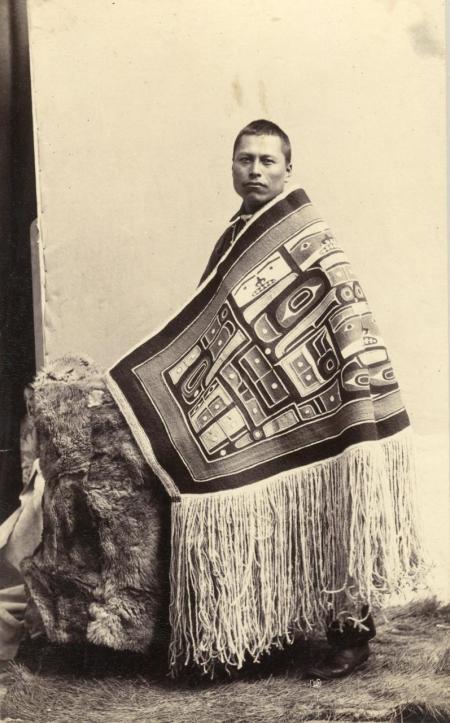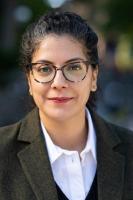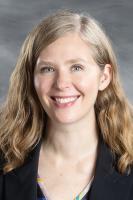
"Northwest Coast (Haida, Tsimshian or Tlingit) leader with Chilkat Robe, Alaska," 1891. Catalog record
American Antiquarian Society
185 Salisbury Street
Worcester, MA 01609
United States
The 2025 Center for Historic American Visual Culture (CHAViC) summer seminar, led by Monica Bravo and Emily Voelker, will focus on nineteenth-century American photography, broadly conceived. Participants will learn early photographic processes, formats, and materialities; cultivate their skills in visual analysis and historical interpretation of and through photographs; and critically reconsider scholarly narratives about American photography’s place in the world. Participants will work closely with photographs in AAS’s extensive graphic arts collection, while also exploring photography’s relationship to and circulation alongside other materials in the Society’s vast print and manuscript collections.
The seminar aims to expand the geography of nineteenth-century American photography by centering transatlantic connections among Indigenous and European sovereign nations, transpacific trade networks, and representations of and by diasporic communities within the United States. Within these complex networks, participants will explore how photographs take on multiple meanings and can be read in different ways in distinct contexts. For example, a photograph of a landscape can support a legal claim to property on the one hand, while serving as material evidence of extractive practices on the other. Similarly, a portrait might serve as a family photograph to one population, and an official document to another. Early American photography profoundly impacted the ways in which people understood themselves and the world. Examining our affective and theoretical responses to photography’s material traces (and, notably, absences) in the archive influences how we understand society—both past and present.
The study of photographs is necessarily interdisciplinary. As such, the seminar welcomes scholars and professionals from multiple backgrounds that may include American studies, art history, Black studies, gender studies, history, libraries and archives, literature, museums, Native American and Indigenous studies, and visual and material culture studies, among others. No previous experience in photographic history is required.
Guest speakers for the seminar include Makeda Best, Sarah Sense, and Stephanie Hueong Tung.
About
Participation is intended for graduate students, college and university faculty, librarians, curators, and museum professionals.
Accessibility
CHAViC is committed to creating an environment that welcomes all people and meets their access needs. The AAS library and classroom facilities are wheelchair accessible. Other accommodations may be available upon advance request. Participants are encouraged to indicate any accessibility needs in their applications.
Application
The deadline for applications is April 15, 2025.
Syllabus
The syllabus will be available in the spring. Online access to the seminar readings will be provided to admitted participants.
Cost
Tuition for the seminar is $850, which includes a day trip to the Peabody Essex Museum, lunch each day, light morning refreshments, and two evening meals. Several tuition scholarships to attend the seminar will be available for early career scholars and graduate students. Notification of these awards will be sent to recipients after admission to the seminar.
Housing
The cost of housing is not included in the tuition fee. Participants will have the option of staying in dormitory housing on the Worcester Polytechnic Institute campus (within easy walking distance of AAS) for approximately $77.00 per night.
Contact
For questions about the seminar, contact John J. Garcia, AAS director of scholarly programs and partnerships, at jgarcia [at] mwa.org (jgarcia[at]mwa[dot]org) or 508-471-2134.

Monica Bravo is assistant professor of photography history and theory in the Department of Art and Archaeology at Princeton University. She is the author of Greater American Camera: Making Modernism in Mexico (2021), which was shortlisted for the Charles Rufus Morey Book Award from the College Art Association. Her current book project, Silver Pacific: A Mineral History of Early American Photography . Her publications have appeared in American Art, Art Bulletin, Art History, History of Photography, and Panorama: Journal of the Association of Historians of American Art, among other venues. Bravo previously taught at Yale University, the California College of the Arts, and the University of Southern California.

Emily Voelker is assistant professor of art history at the University of North Carolina, Greensboro. Her current monograph, Generations: Photography, Archives, & Sovereignty Across the Indigenous Atlantic traces photographs of Plains Indians sent to or made at Paris exhibitions in the late nineteenth century as ongoing sites of negotiating tribal sovereignty. Her second book, a collaboration with Erin Hyde Nolan entitled Reading Native American Portraits in Ottoman: Global Economies of 19th-century Survey Photography, similarly charts American practices in global purview, examining a decades-long photographic gift exchange between the U.S. and Ottoman empires. Voelker recently served as collaborator on the National Historical Publications and Records Commission (NHPRC)-Mellon digital humanities grant, “Wičhóoyake kiη aglí—They Bring the Stories Back: Connecting Lakota Wild West Performers to Pine Ridge Community Histories,” and on the curatorial council for the Minneapolis Institute of Art exhibition, In Our Hands: Native Photography, 1890-Now.
Makeda Best is deputy director of curatorial affairs at the Oakland Museum of California, where she oversees the curatorial, collections and production departments. Formerly the Richard L. Menschel Curator of Photography at Harvard Art Museums, Best’s exhibitions include Time is Now: Photography and Social Change in James Baldwin’s America and Devour the Land: War and American Landscape Photography Since 1970. She is the author of Elevate the Masses: Alexander Gardner, Photography and Democracy in 19th Century America (2020) and co-editor of Conflict and Identity in American Art (2016).
Sarah Sense is an artist based in California. Her maternal grandmother is Choctaw from Oklahoma, and her maternal grandfather is Chitimacha from Louisiana. From her grandmother, she gained a love of baskets and an interest in practicing basket weaving herself. With the blessing of the Chairman of the Chitimacha Tribe, Sense began practicing her variation of the traditional method during graduate school at Parsons the New School for Design. While director and curator of the American Indian Community House in New York, Sense cataloged the AICH’s thirty- year history, inspiring her search for Indigenous art internationally. She has since traveled across North America, Central America, South America, Southeast Asia, the Caribbean, and Europe to learn more about the art of Indigenous communities. Landscape photography from her travels is an integral part of her weaving. Sense’s recent exhibitions include In Our Hands: Native Photography, 1890–Now (Minneapolis Museum of Art); [Un]Mapping: Decolonial Cartographies of Place (Hood Museum at Dartmouth University); and Interwoven Power: Native Knowledge/Native Art, (Montclair Art Museum, NJ). Her work is held in private and public collections, including the Hood Museum of Art, the Montclair Art Museum, the Portland Museum of Art in Oregon, and the Rijksmuseum in Amsterdam.
Stephanie Hueon Tung is Byrne Family Curator of Photography at the Peabody Essex Museum. A specialist in the history of photography of China, Dr. Tung’s research focuses on transnational art exchanges, global modernism, translation studies and notions of artistic labor. Her exhibitions include As We Rise: Photography from the Black Atlantic; Early Photography in China; and A Lasting Momento: John Thomson’s Photographs Along the River Min. She has published widely on photography and contemporary art from China. Her most recent book is Ai Weiwei: Beijing 1993–2003 (2019), co-authored with Ai Weiwei and John Tancock.